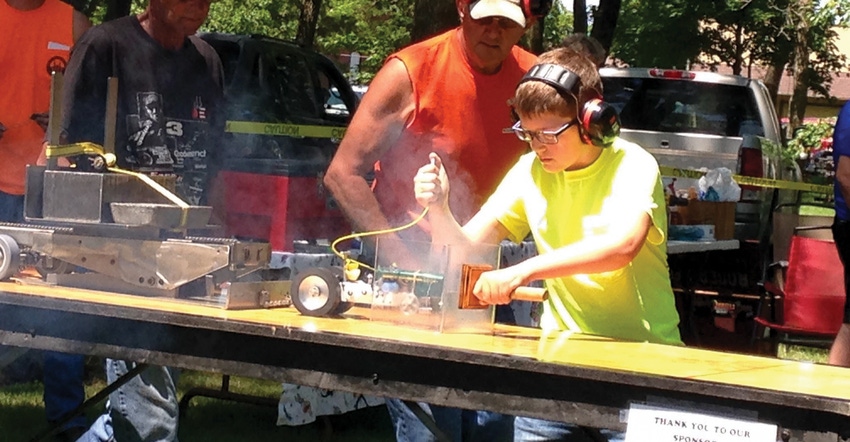
Farmers are famous for collecting toy tractors, but adding a motor and pulling a sled — just like full-size tractors? That’s a new one for the Farm Progress Show.
The National Micro-Mini Tractor Pullers Association will hold a pull each day of the show, Aug. 27-29 in Decatur, Ill. There will be a class at 9 a.m., 10 a.m., 11 a.m., 12:30 p.m., 1:30 p.m., 2:30 p.m. and 3:30 p.m. Look for the pulls on Lot 54W, on the southwest corner of the grounds.
Todd Coulter, association president, says the group has pulled at state and county fairs, and local festivals, but never at a venue the size of the Farm Progress Show.
So what is a micro-mini tractor pull? Think 16th-scale Ertl toy tractors, equipped with 30,000-rpm engines and a series of gears to reduce it to 300 rpm. They run on a wood track mounted on a table top, measuring 2 feet wide by 16 or 24 feet long. They’re mounted with rubber tires or silicone-coated foam tires.
“It’s a hobby, where if you really enjoy tractor pulling and can’t afford the big tractors, these are more affordable,” Coulter says.
Each day will run two- and four-wheel-drive classes, plus semi classes. Coulter says all are modeled after big tractors and trucks, and have similar rules for hitch heights, engine sizes, etc.
Getting started
Coulter got his start with micro-mini tractor pulls through his son’s 4-H project in Indiana. “The first year of 4-H, you build it as an electric and you pull three years as electric. The fourth through sixth years, you pull as fuel power,” he says. “Then the last year four years, you can pull the same tractor and build a super stock tractor, which is the next size larger, and go to silicone tires.”
Coulter says association members are made up of mechanics, engineers, farmers, retired folks and a few younger kids.
Most tractors start as an Ertl toy — bought off the shelf and cut up. Coulter says you can buy decals online, and build a frame for tractors with 1-inch-square aluminum tubing. Few have mufflers, and he knows of one tractor that runs with four engines.
“It can get pretty loud! They’ll know where we are,” he says with a laugh.
Because tires must be a certain density, they can be harder to find. Many members make their own silicone-coated foam tires, and one Indiana member makes his own IH hoods using a small metal bender.
But tires are the secret sauce. “The trick to the whole thing is how you work your tires,” Coulter says. “It’s how you prepare your tires for getting traction.”
Also key is physics. Hitch height and weight placement matters, and you’ll see people taking notes for sled weight, hitch height, weight placement, temperature and even humidity.
About the Author(s)
You May Also Like






